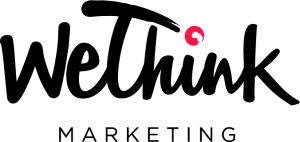In this article, we will explain what is a sales funnel and how can you use it to improve your sales process. Let’s dive in. A sales funnel is a diagrammatic representation of the various stages through which potential customers pass before making an actual purchase from you. In simple terms, a sales funnel shows the different actions that potential customers take before making an actual purchase from you. You can use a sales funnel to determine how easy it is for customers to move through your sales process from point-of-contact (POS) outreach, contact management, qualified leads or accounts, meetings, proposals and meetings with decision makers. The goal of using a sales funnel is to reduce the friction points so that customers don’t get dragged through multiple steps before they actually make an actual purchase from you. Once you use the tool consistently to identify which steps are dragging the process and which aren’t, you will be able to streamline them and make your processes more efficient as well as effective in growing new business. Let’s explore how can you define a Sales Funnel?
What is a Sales Funnel?
A sales funnel is a diagrammatic representation of the various stages through which potential customers pass before making an actual purchase from you. The sales funnel starts with point-of-contact (POS) outreach, followed by a series of stages where leads become qualified, account opportunities are created and finally, the sales cycle ends with closing a deal. Depending on your business, each of these stages may be slightly different. However, the general shape of a sales funnel will remain the same. You can use a sales funnel to determine how easy it is for customers to move through your sales process from point-of-contact (POS) outreach, contact management, qualified leads or accounts, meetings, proposals and meetings with decision makers. The goal of using a sales funnel is to reduce the friction points so that customers don’t get dragged through multiple steps before they actually make an actual purchase from you. Once you use the tool consistently to identify which steps are dragging the process and which aren’t, you will be able to streamline them and make your processes more efficient as well as effective in growing new business. Let’s explore how can you define a Sales Funnel?
How to Define a Sales Funnel?
There are many ways to define a sales funnel. However, the most effective sales funnels are linear. You can create a sales funnel diagram either by drawing it or by using an online tool like Funnel Architect. If you are drawing the sales funnel diagram, make sure to include all six stages of the sales funnel.
Create a User Journey Map in Sketch If you are using a diagrammatic tool to represent a sales funnel, it’s a good idea to add a user journey map as well. A user journey map is simply a visual representation of all the different stages in your sales funnel. This will help you identify the friction points in the sales funnel as well as what you can do to improve the customer journey.
A sales funnel diagram should be linear in shape with six stages. The stages of a sales funnel can be modified to suit your business. For example, in an ecommerce business, the funnel might include making the initial purchase, returning the product after a period of time, and then re-purchasing the product. Use a Sandbox for Testing Your Funnel If you are using a traditional sales funnel diagram, it’s a good idea to include a sales funnel sandbox version of your sales funnel as well.
A sandbox version is a simulation version of your sales funnel where you get to test each stage for the customer journey and see how customers react when they interact with your sales team. You can use a sales funnel sandbox to test the customer journey and identify the friction points as well as the steps that customers like and hate. You can then use the results of the customer journey test to make changes to your sales process to improve customer experience. Use a sales funnel sandbox to identify the customer journey and friction points of your sales funnel. This will help you identify and address the customer pain points.
The final Step: Adjust and Coaching
If after making the changes to the sales funnel based on the test results, you find that the process is still dragging, it’s time to make adjustments to your sales process. You can make adjustments at any stage of the sales funnel. However, it’s important to identify the stage of the sales funnel where the adjustment is needed. If you are adjusting the sales process at the account stage, it’s important to identify if the process is dragging or if the customer journey is taking too long. Once you identify the stage in the sales funnel where an adjustment is required, you can make the adjustment, and see if it solves the problem. If you are still dragging at the same stage after making adjustments, then you have identified a problem, and it’s time to make a change and hire a coach to help you get to the next level. These are a few tips to help you define a sales funnel. If you want to learn more, you can also watch these sales funnel videos to get started.






